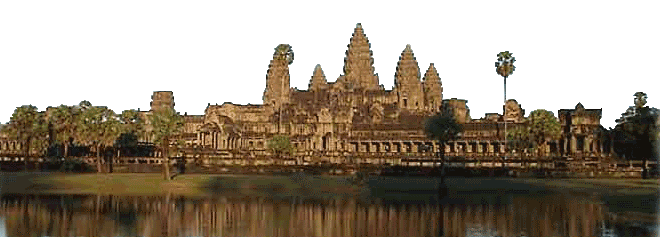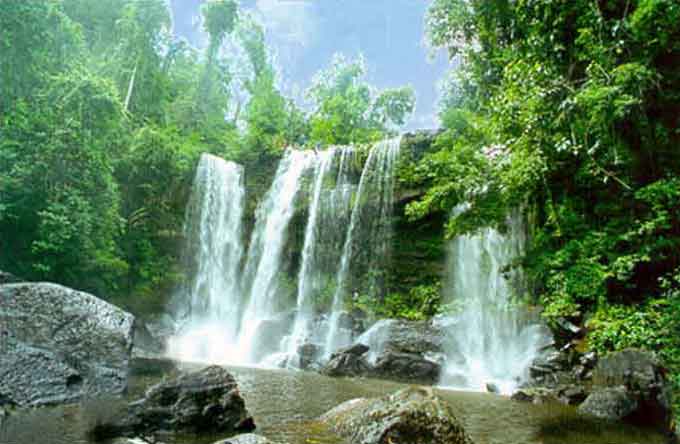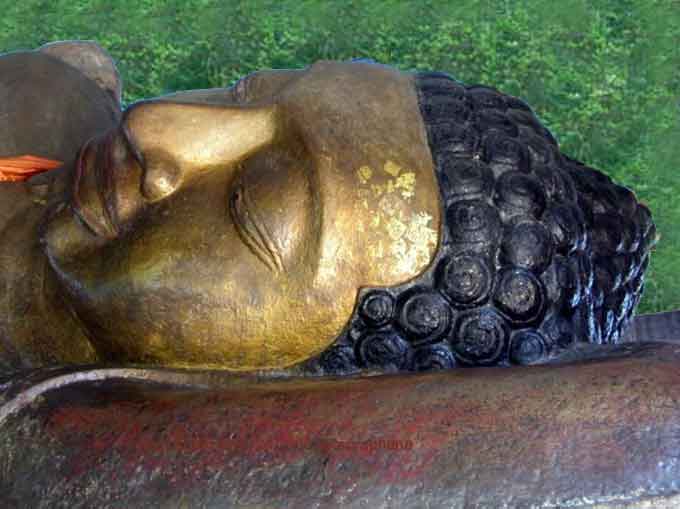Cambodge Temple d'Ankor - Phnom Kulen

Cambodge temple d'Angkor
PHNOM KULEN*
Constructed Late 9 th century
Religion : Hindu
Style Kulen
King Jayavarman 2 nd
Location:
Phnom Kulen is a mountain range that rises to an altitude of 487 meters, located just northeast of the Angkor archaeological site.
Phnom Kulen National Park is located 48 km north of Siem Reap.
Comments:
The eastern plateau of Phnom Kulen East has been a historical and sacred site due to its advantageous geographical location. It contains numerous archaeological remains. A small temple stands at the summit of the mountain, housing a large reclining Buddha, carved directly from the sandstone. This Buddha, contrary to traditional iconography, is reclining on its left side; it shows strong influences from Dvaravati art.
The central part of the mountain range contains the site of the River of a Thousand Lingams, Kbal Spean, discovered in 1968 by ethnologist Jean Boulbet. In 800, Jayavarman II moved his capital to the site then called Mahendraparvata, now Phnom Kulen. In 802, he performed the magical ritual to free Cambodia from Javanese rule, as described on the Sdok Kok Thom stele.
Localisation :
Le Phnom Kulen est un massif qui culmine à 487 mètres d'altitude, situé au nord-est immédiat du site archéologique d'Angkor.
Le parc national de Phnom Kulen se trouve 48 km au nord de Siem Reap.
Commentaires :
Le plateau oriental du Phnom Kulen Est[] a été un lieu historique[] et sacré à cause des avantages de sa situation géographique. Il comporte de nombreux vestiges archéologiques[]. Un petit temple se dresse au sommet de la montagne, abritant un grand bouddha couché, directement sculpté dans le grès. Ce bouddha, contrairement à l'iconographie traditionnelle, est couché sur son côté gauche ; il présente de fortes influences de l'art de Dvâravatî[].
La partie centrale du massif contient le site de la Rivière aux mille lingam Kbal Spean découvert en 1968, par l'ethnologue Jean Boulbet.
En 800, Jayavarman II y déplace sa capitale sur le site appelé alors Mahendraparvata, aujourd'hui le Phnom Kulen. Il y fait célébrer en 802 le rituel magique pour libérer le Cambodge de la tutelle de Java, comme décrit sur la stèle du Sdok Kok Thom.




